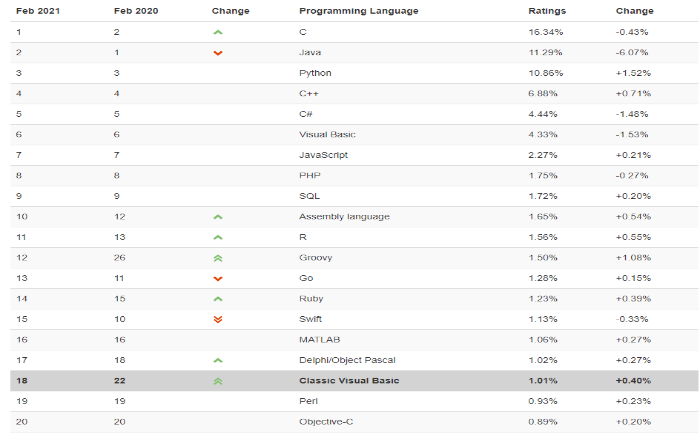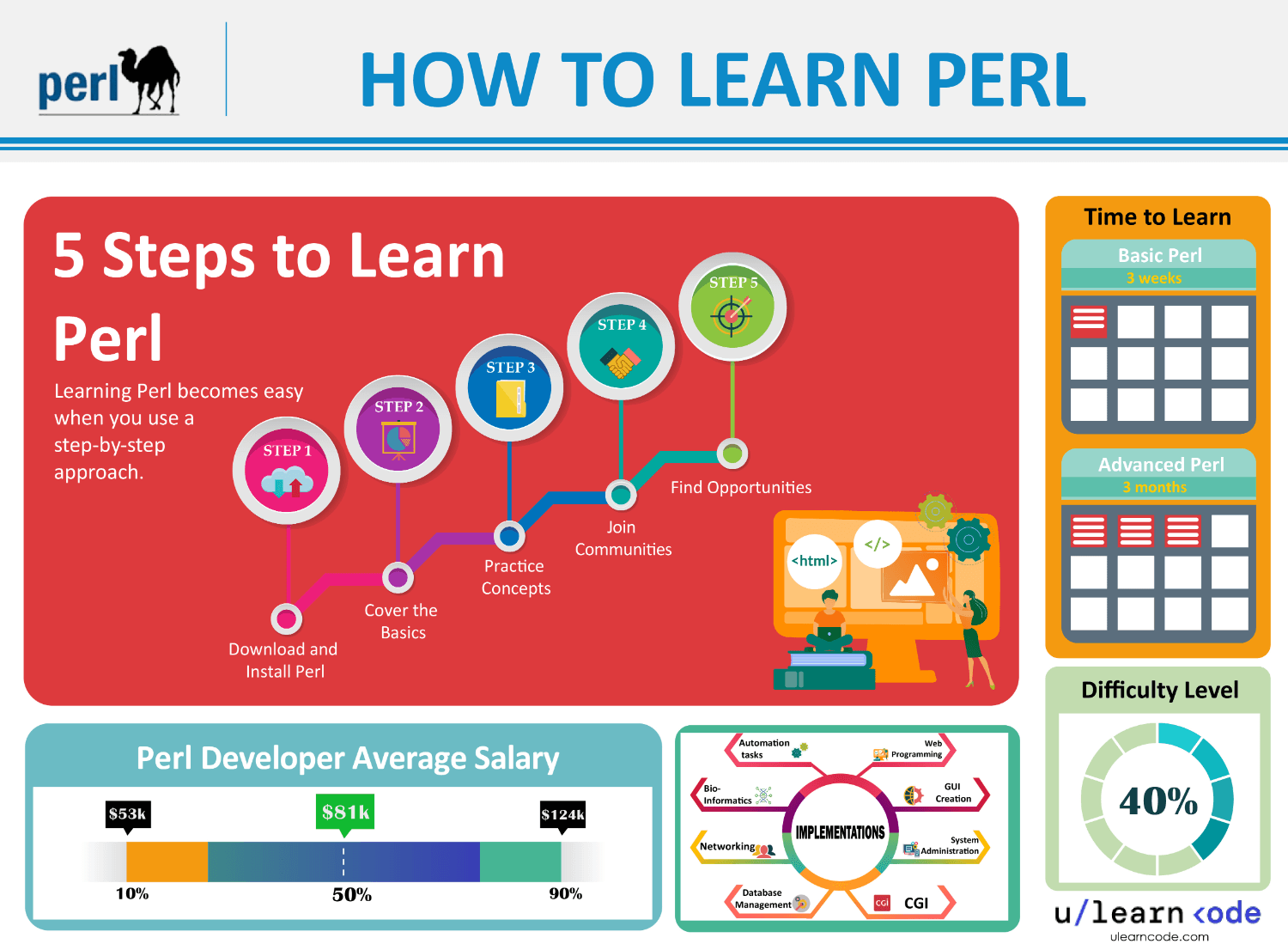Contents
Perl is a dynamic general-purpose language that first emerged in 1987. It was dominant throughout the 20th century, and a newer Perl 5 version was released in 2000, which continued through 2019.
The language has spread its branches by dividing itself into various small languages dedicated to specific applications. The developers introduced Perl 6 in October 2019 with an official name “Raku”. The Perl 7 is expected to become a part of the family in 2021.

Usage of Perl is constantly declining according to TIOBE Index. The Perl is now ranked at 19th number out of a total of the top 20 languages. Still, many programmers consider Perl as a part of their programming journey to grasp core programming concepts.
The language is used for various purposes such as GUI Creation, Database Management, Bioinformatics, and some automation tasks. Python has dominated Perl for most of the part, but there are still some distinct features that keep it alive.
Is Perl Hard to Learn?
Perl is considered an easy language for those who already have a programming background. Beginners find it to be a challenging because many of the new concepts are confusing. If you have any experience with C or even BASIC, then Perl is going to be a much easier language to learn.
The Perl developer Larry Wall said of the language that “There is always more than one way to do it,” a core concept of the language. You can do a lot of things by just utilizing its small subsets.
Moreover, Perl is an interpreted language where you can write and test programs without needing a compiler. This drastically improves program testing and debugging rate for faster learning.
The language is much easier for those people who have any prior experience with programming along with basic knowledge about regular expressions. Perl has a fairly simple syntax, so understanding other’s code is quite easy.
How Long to Learn Perl
If you want to learn Perl basics, then dedicate around 2 months to and learn consistently. However, it is a bit difficult to gain proficiency in the language, and it may take you up to 1 year to reach an advanced level. Some developers even spend a decade of their lives mastering Perl.
If you have any prior experience with programming languages like C, then it will become easier for you to understand complex fundamentals. On the other hand, if you have an average intellectual level with no programming experience, then Perl might give you a tough time.
Best Way to Learn Perl

If you have made your mind to learn Perl, then these are a few steps to make your learning process easier:
#1: Download & Install Perl
Perl comes pre-installed in many operating systems such as macOS and Unix, but if you are using Windows, then you may need to install it from Perl’s official website separately. There are two Perl versions available for Windows users.
The first one is Strawbery Perl which is the suitable binary distribution for Windows. The second binary distribution package is ActiveState Perl which can be used on many different platforms. You should install Strawberry Perl if using Windows.
#2: Cover the Basics
You always need to learn the fundamental concepts of every programming language before you start working with it. Language syntax is another basic thing that you need to learn. Perl has a simple syntax similar to C. There are numerous sources available online that you can utilize for learning purposes.
Books are the ultimate source to learn these old languages; here are some amazing Perl books that you should study as a beginner:
- Learning Perl – Randal L. Schwartz (Author)
- Beginning Perl Programming – William “Bo” Rothwell (Author)
- Perl 6 Fundamentals – Moritz Lenz (Author)
If you are not fond of books, you should explore these impressive Perl courses that will take you from a beginner to an advanced level. There are also some great playlists available on Youtube for free such as:
#3: Practice Concepts
You might learn basic ideas in less than a month, but it is also crucial to practice for a strong grip on the fundamentals. It is not possible to move to advanced Perl training without any hands-on experience.
Try to create short programs with your own ideas and work through the debugging process to fix any issues. Do not just rely on a single course or book; use Google to find answers to your questions.
#4: Join Communities
Programming communities help you grow faster by creating an environment where everyone can help each other fix problems and understand complex subjects. Perl has some of its own dedicated forums where you can communicate with masters for advanced training. Here are a few of them:
#5: Find Opportunities
Perl is used in web development, CGI scripts, text file processing, and more. If you have over two years of hands-on Perl experience, then you can develop these skills.
You can find new jobs or freelance work that demands Perl skills, or you can simply move on to other languages such as Python or Java. Perl can form your strong programming base, but it is not a language that will take you very far in your career.
Wrapping It Up
The usage of Perl is declining for many years because of new modern languages such as Python, which carriers more potential in terms of flexibility, speed, frameworks, and easy structure.
If you want to try out Perl, then learn it for the experience, but if your aim is to find job opportunities then it is not recommended at all. Use Perl to strengthen your programming concepts and then move onto a better programming language that has the potential to grow in upcoming years or decades.